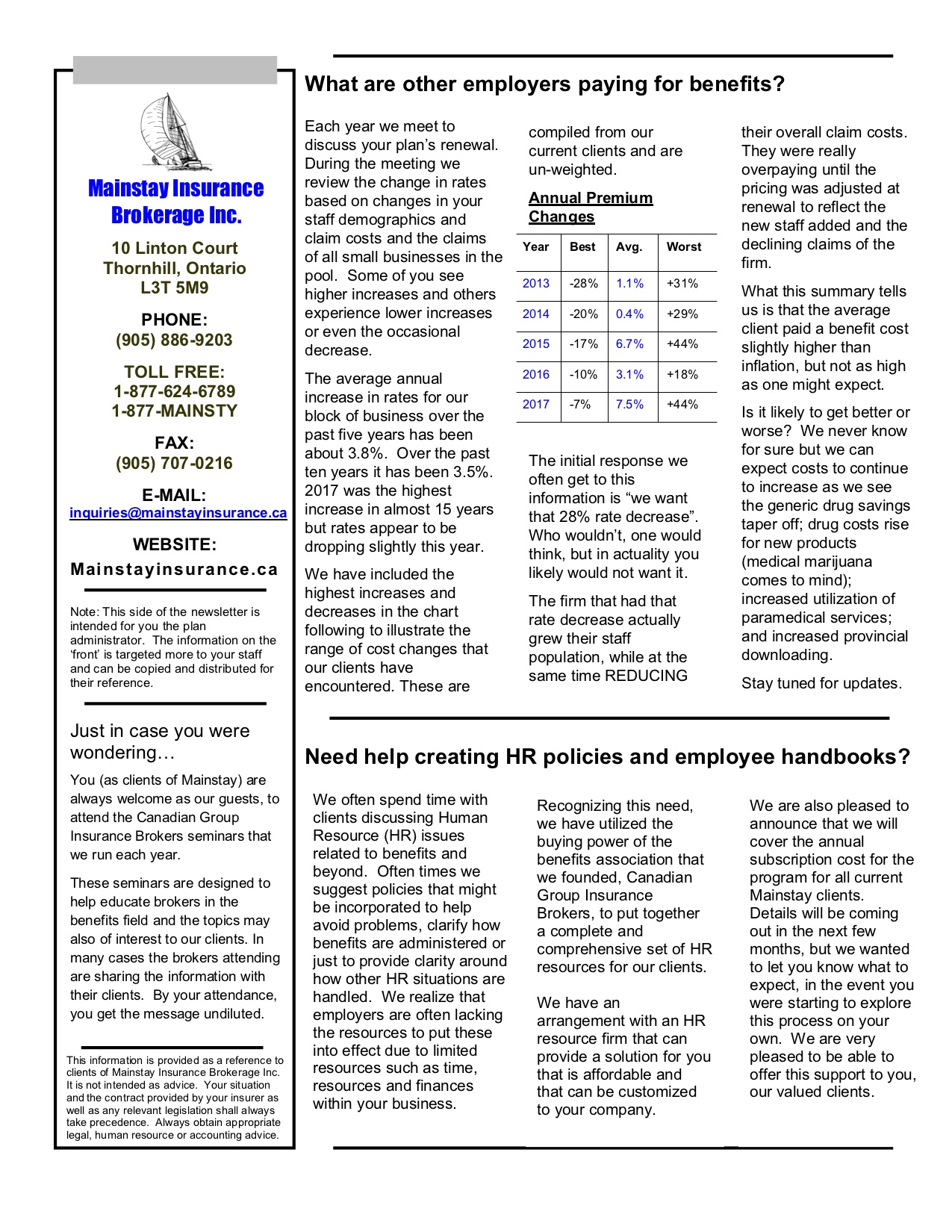This is an article from last year about the Ontario Trillium Drug plan that was due to coordinate with private plans in the fall of 2017. It was delayed due to the introduction of OHIP+ but is still on the agenda. There is a slight chance of its introduction in 2018 depending on the outcome of the next provincial election. Regardless, we will keep pushing the ministry to update their systems to make insurers pay your employees claims properly and charge you appropriately.
Year: 2018
For Canadian Travellers: US Travel Future is Upbeat, But Do Your Homework
This is a great piece on travel to the US that identifies the changes going on south of the border. Group coverage provided by benefit plans is often better than individual plans, but pre-existing condition clauses and unstable health can still cause issues and gaps in coverage. The suggestions below are good for those travelling with every kind of coverage.
According to the most recent report by international business consulting firm Deloitte: of the six major segments that comprise the US travel industry (airlines, lodging, car rentals, cruises, rail, and travel packaging), a strong five per cent growth is forecast for 2018, setting the USA travel industry on course to hit a record-breaking $370 billion by year’s end.
Employers expect an increase in employee medical leaves
We are seeing an increase in medical leaves and disability claims amongst our clients. This is just anecdotal, but seems to be supported by some recent reports like the one below.
Update: OHIP+ Children and Youth Pharmacare
We try and stay informed of the changes that happen within the Ontario Ministry of Health and share that information when it becomes available. Most employees and their dependent children are having claims paid at the pharmacy with no problem, but from time to time they may come to you with questions and below are some links that may prove helpful.
March 16, 2018
We are pleased to share this update on OHIP+: Children and Youth Pharmacare (OHIP+) with you.
As the weekly webinars have now ended, the ministry will continue to provide updates through eblasts to ensure individuals receive the information they need regarding OHIP+.
If you have any questions or comments, please feel free to contact the ministry at OHIPplus@ontario.ca.
OHIP+ ACTIVITY SINCE LAUNCH:
As of March 16, 2018, there have been more than 2.5 million OHIP+ paid claims processed. This includes antibiotics to treat infections, inhalers for asthma, various insulins, oral diabetic medications and diabetes test strips, epinephrine auto-injectors (e.g. EPIPENs®), and drugs to treat arthritis, epilepsy and other chronic conditions.
EXCEPTIONAL ACCESS PROGRAM
If an OHIP+ recipient needs a drug not listed on the Ontario Drug Benefit (ODB) Formulary, they may be able to get the drug covered under the Exceptional Access Program (EAP).
To see if a drug is available through the EAP, please visit the following website: www.ontario.ca/page/check-medication-coverage/
To view a list of EAP medications please see the attached DIN list or visit:http://www.health.gov.on.ca/en/pro/programs/drugs/eap_criteria.aspx
For more information on the EAP, visit https://www.ontario.ca/page/applying-exceptional-access-program#section-0
Check the online eFormulary for LU drugs and criteria: https://www.formulary.health.gov.on.ca/formulary/
For information on EAP reimbursement criteria of frequently requested drugs including biologics, please visit: http://www.health.gov.on.ca/en/pro/programs/drugs/docs/frequently_requested_drugs.pdf).
Visit us online at www.ontario.ca/OHIPplus
Prescription Drug Checker Tool: www.ontario.ca/page/check-medication-coverage/
Ontario Employers – Are You in Compliance?
Employers with employees in Ontario often ask us to confirm legislative requirements under various employment statutes, including mandatory postings, training, and policies under the Employment Standards Act, 2000, the Occupational Health and Safety Act, and the Accessibility for Ontarians with Disabilities Act. To make this information conveniently available, the Littler Toronto office has assembled these requirements in a single publication, which was originally disseminated in August 2017. An updated version of this publication can now be accessed through the link below.
Parental Leave: What to Expect When Your Employee is Expecting
We seem to hit runs of employers who are having staff away on Maternity/ Parental leave. Now seems to be one of those times (spring?) so this article is relevant and timely.
National pharmacare strategy to preserve existing system: Morneau
No one is exactly sure what the recent budget announcement will mean, but I’m guessing that employee benefit plans are NOT going to be dropping their drug plans anytime soon. Both the Kirby and Romanow Reports, of 15 years ago, pointed to improving prescription drug coverage, but little if anything has progressed on a national level. Maybe this time?
Editorial: Projections for drug costs a mixed bag for plan sponsors
Our clients have seen average OVERALL benefit plan rate increases (including all benefits, not just drugs) of less than 4.5% over the past 15 years. 2017 brought some higher increases averaging 7.5% (partly due to aging) but according to the article below, we may see the rate of increase slow again over the coming year.
According to projections released by Aon Hewitt in December, costs for extended health-care plans will likely rise by six per cent in 2018. After inflation of 2.1 per cent, the net projected cost increase is 3.9 per cent. That’s down measurably from an overall cost increase of eight per cent in 2017 and a net rise of 6.1 per cent. And the numbers compare well to the global gross cost increase of 8.4 per cent. For Article CLICK HERE


